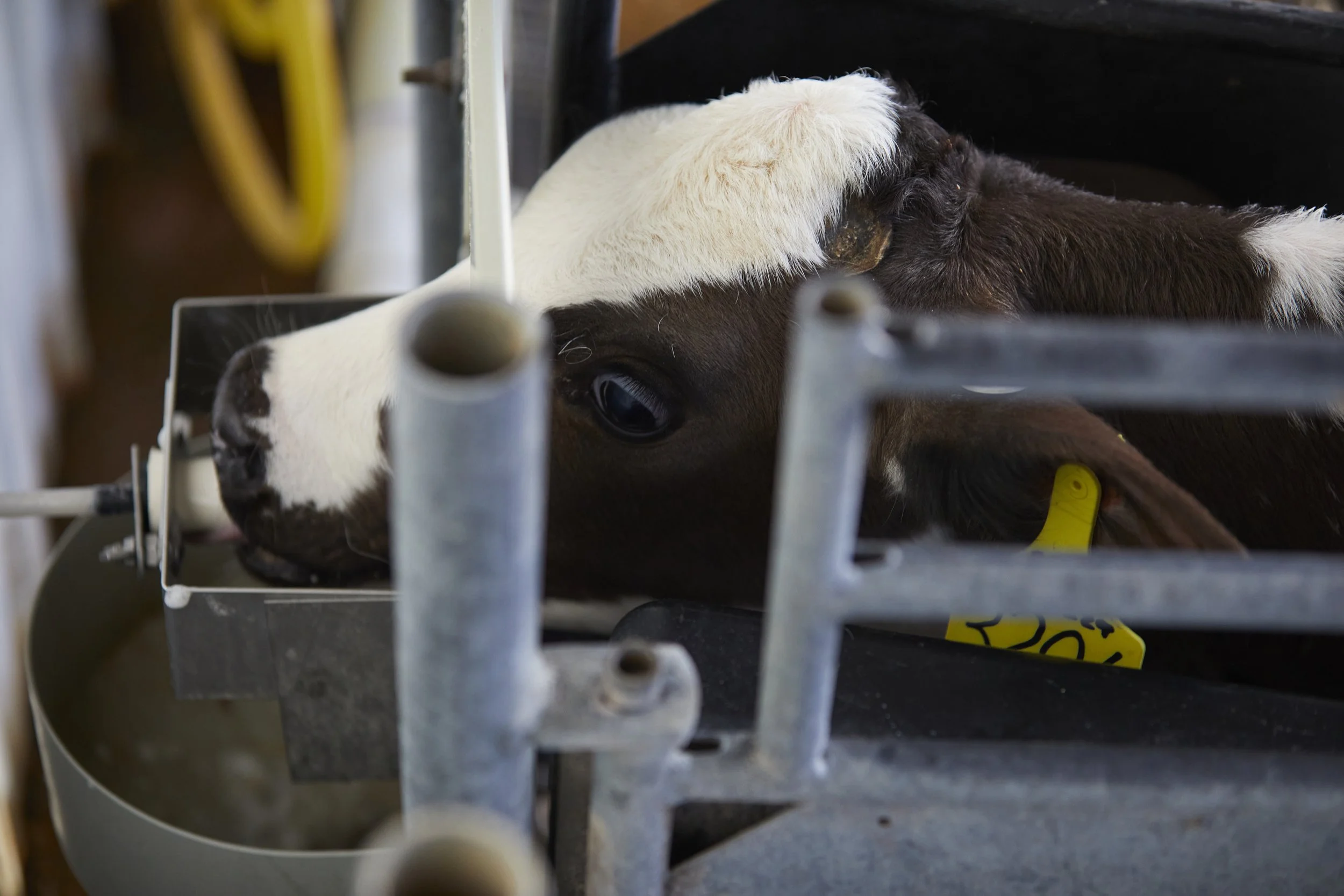ATP Monitoring Helps Solve the Mystery of Calf Rearing Sanitation
When it comes to raising healthy calves, sometimes it’s the details you can’t see that make all the difference.
Adenosine triphosphate, or “ATP,” is the primary energy-transferring molecule of living cells. If live bacteria cells are present on any surface, they will contain ATP; so, the more ATP, the more bacteria. We now have handy, on-farm technology that identifies levels of ATP to determine if calf-rearing equipment and housing that looks clean truly is clean. In short, measuring ATP allows us to do “CSI”-style investigations for your calves.
The process starts with collecting samples by using a swab to wipe the surface, and then dipping it in a chemical reagent that causes the bacteria cells to rupture and release ATP. When this happens, light is emitted. It is the measure of that light – using a tool called a luminometer – that provides a numeric assessment of ATP presence. The higher the reading, which is expressed in Relative Light Units (RLU), the more ATP that is present, which correlates to higher bacteria loads.
“An initial ATP audit will identify the “hot spots” that need improved sanitation. In addition to testing every surface that touches milk, it is also valuable to test the calves’ housing environment and drinking water.”
In a practical setting, virtually anything that comes in contact with calves or their feed can and should be monitored in an ATP audit. Harmful bacteria can lurk on the surfaces of colostrum collection equipment, bottles, nipples, esophageal feeders, whisks and other mixing equipment, pails, pasteurizing equipment, hoses, and milk transport equipment. Often, equipment that looks clean actually harbors bacteria due to a substance called biofilm. Biofilm builds up over time when bacteria colonize and create a protective outer layer that resists chemical sanitation efforts. While it’s often invisible, you may have observed an extreme example of a slimy, cheesy layer of biofilm on the hard-to-clean “neck” of a calf bottle. You may have created biofilm yourself sometime, too, if you’ve ever failed to brush your teeth for a few days.
Routine sanitation and disinfection of calf equipment is an absolute necessity and requires steps that include both a detergent to break up fat molecules and an acid to remove protein. But you can’t sanitize dirty surfaces – the dirt needs to be removed first. The other critical piece is physical brushing and scrubbing. Just as we can’t break up biofilm on our teeth by simply swishing a mouth rinse, biofilm on calf equipment also requires mechanical disruption to be removed completely.
Many farms have improved their sanitation and subsequent calf health by simply investing in (and routinely replacing) more brushes and adding brushing steps to their equipment-cleaning protocols. For hard-to-reach surfaces like esophageal feeders and hoses, more frequent and regularly scheduled replacement is advised.
Virtually anyone raising calves could benefit from an ATP audit, whether you have an active calf-health challenge or just want to assess how you’re doing. I worked with a farm recently that was battling scours and searching for answers. They were excellent, highly conscientious managers of their calves and equipment, so the problem was truly puzzling. An ATP audit showed they were, indeed, doing an outstanding job with calf equipment sanitation - except for one critical element. When we tested the “float” nipples they were using to pail-train calves, the ATP levels were off the charts. This one piece of equipment was infecting virtually every one of their young calves. Even worse, the calves were each introduced to it at 7-10 days of age – a highly vulnerable window in terms of low natural immunity. In essence, they were following a perfect scenario for making every calf sick. ATP testing allowed us to identify the cause and implement a strategy to fix the issue by replacing some of the nipples and properly cleaning other ones.
An initial ATP audit will identify the “hot spots” that need improved sanitation. In addition to testing every surface that touches milk, it is also valuable to test the calves’ housing environment and drinking water. Once the tests are complete, we can then make recommendations that might include more frequent cleaning, increased brushing and scrubbing, or a change in cleaning products or procedures. Follow-up checks then can assess how well the changes are working. It is often very gratifying to see improved results, and you probably will observe better calf health at the same time.
In addition to your Strauss Feeds representative, many veterinarians, sanitation suppliers, and milk inspectors offer ATP testing. All of these advisors are generally happy to collaborate on the process and results because everyone stands to benefit from them – especially your calves.



It takes hard work and considerable investment to create a newborn calf. So, when that calf hits the ground, we want to do everything we can to give it the best possible start to a healthy and productive life.